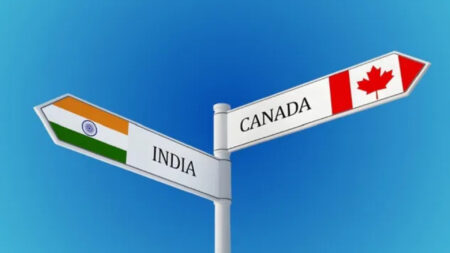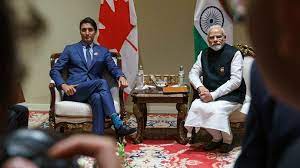Last month marked the centenary of the Pal-Dadhvav massacre. Over 1,200 people were killed when the British opened fire on tribals demonstrating in what is now Gujarat on March 7, 1922. There are rising calls for Boris Johnson to address the issue as he begins his two-day tour from Ahmedabad.
The massacre
On March 7, 1922, the catastrophe occurred in the Sabarkantha district’s Pal-Chitariya and Dadhvaav villages, which were then part of Idar state (Gujarat).
According to historical sources, a group of tribal people headed by Motilal Tejawat assembled on the banks of the Heir River to oppose the British authorities’ land revenue system and regulations connected to Jagirdar and Rajwada.
Tejawat, from Koliyari village in Rajasthan’s Mewad district, had also enlisted the help of Bhils from Kotda Chhavni, Sirohi, and Danta. The protest was claimed to have had an impact on Vijaynagar, Dadhvaav, Poshina, and Khedbrahma, which are now Sabarkantha talukas; the Aravalli areas.
namely Banaskantha and Danta in Banaskantha district. and Rajasthan’s Kotda Chhavni, Dungarpur, Chittor, Sirohi, Banswada, and Uda The British wanted Tejawat and had formed the Mewad Bhil Corps (MBC), a paramilitary group, to apprehend him.
After learning of Tejawat’s presence in Gujarat, they arrived at the protest site. According to reports, the tribals began shouting slogans in their tongue, such as “We will not pay the tax.” HG Sutton, the commanding officer of the MBC, was enraged by this and ordered his troops to fire on them.
On that fateful day, over 1,200 tribals were purportedly slaughtered due to his commands. It is also reported that the bodies of the indigenous people were thrown into nearby wells. “Like a battlefield, the entire region was littered with bodies,” the Gujarat state administration said.
It went on to say that two wells were “overflowing with corpses.” Twenty-two individuals were murdered, according to British archives. The Bhils, on the other hand, think that 1,200-1,500 of them died.
This episode occurred barely two years after the Jallianwala Bagh massacre in Punjab, which took place on April 13, 1919, when General Reginald Edward Dyer’s army opened fire on peaceful demonstrators, killing over 1,000 people.
However, there has been little written or said about the Gujarat tragedy.
Apologies
Mr Johnson, who has been chastised for Downing Street parties during the coronavirus outbreak, arrives in Ahmedabad, the state’s largest city, today to begin a two-day visit to India. “These atrocities occurred during British control,” Mr Tejawat’s grandson Mahendra told AFP. “If the British PM comes here, he must apologise.”
“My grandpa was only waging a campaign for the poor, innocent, and ignorant tribals,” the 77-year-old continued. “If he believes what happened to the defenceless tribals was wrong, he must show sorrow.” Mr Johnson’s portraits littered the streets of Delhi in the days leading up to his arrival.
However, the legacy of colonial control has long coloured ties between Britain and India, when London considered the world’s second-most populous nation as the gem in its empire’s crown. At the same time, hundreds of millions of Indians resented its dominion.
Prime Minister Narendra Modi’s advertisements frequently highlight the independence struggle as an essential part of India’s national character. The Modi administration has erected massive monuments of prominent freedom stalwarts and established a museum in the Red Fort dedicated to one of them.
PM Modi is a former Gujarat Chief Minister, during whose time a memorial to the massacre victims was created. However, Arun Vaghela, the dean of the history department at Gujarat University, is skeptical that the British Prime Minister would address the matter.
He conducted a field study at the site. He stated that villagers were still discovering old gunshots embedded in trees and bones in deep wells into which individuals had attempted to flee even 20 years ago.
“The British records only indicate 40 to 50 fatalities, but when does any murderer government, British or others, ever expose and recognize the number of individuals it has murdered?”
According to Mr Vaghela’s calculations, the death toll is more than that of the Jallianwala Bagh massacre in Amritsar in 1919, which overshadowed the Queen and Duke of Edinburgh’s state visit to India in 1997. For some, this is the time to move on.
Journalist Vishnu Pandya, the author of a Gujarati-language book about revolutionary sites in the state, has gathered many oral testimonies of the deaths from the tribal population, where he claims the story is recounted in several folk songs.
“The British Prime Minister who is coming here was not even born at the time, and he would have no knowledge of the occurrence,” he stated.
“What has been done is done; it is history, and we must move forward.”
Edited By : Khushi Thakur
Published By : Shubham Ghulaxe













